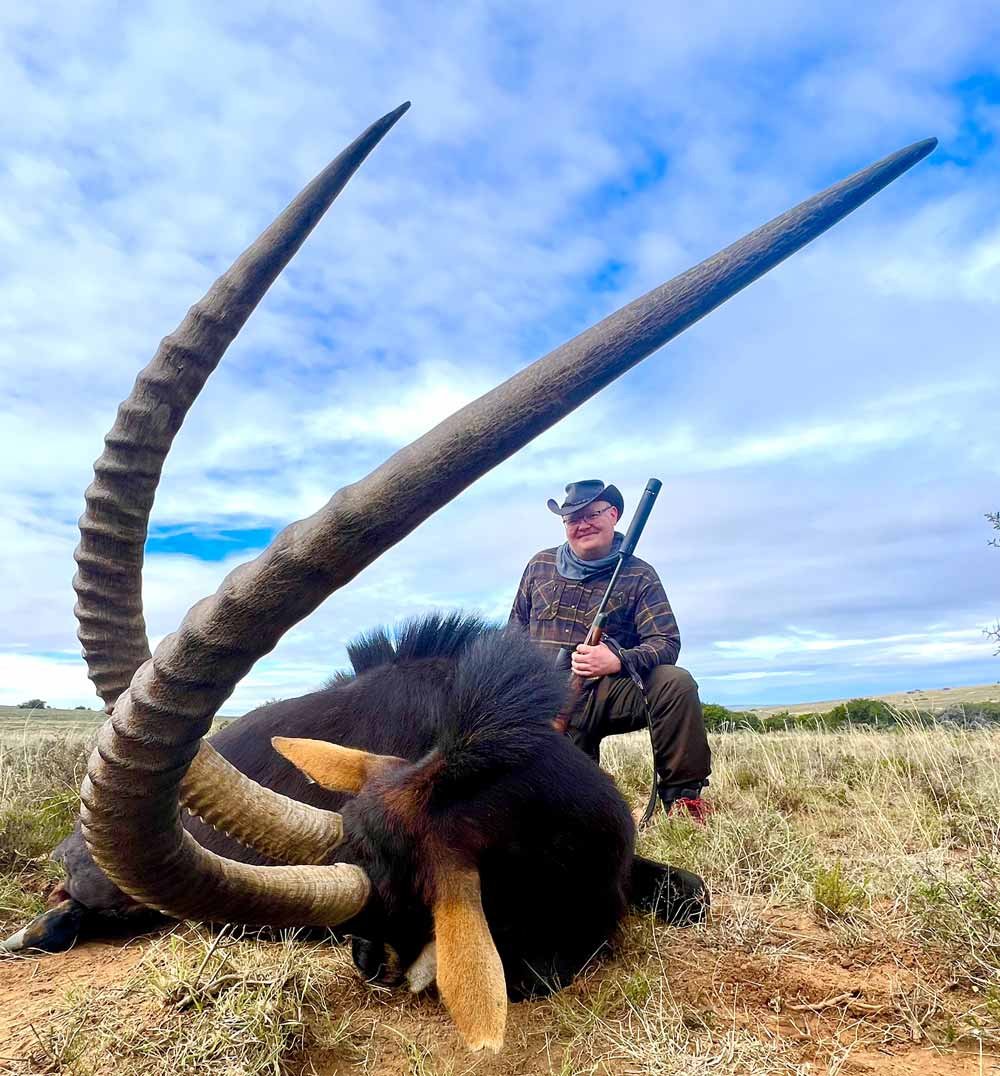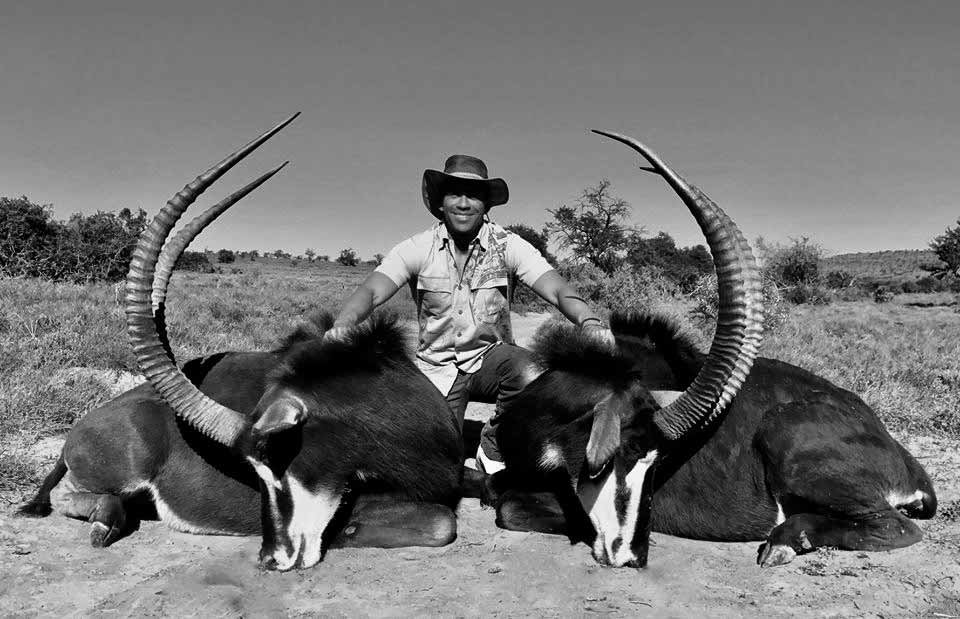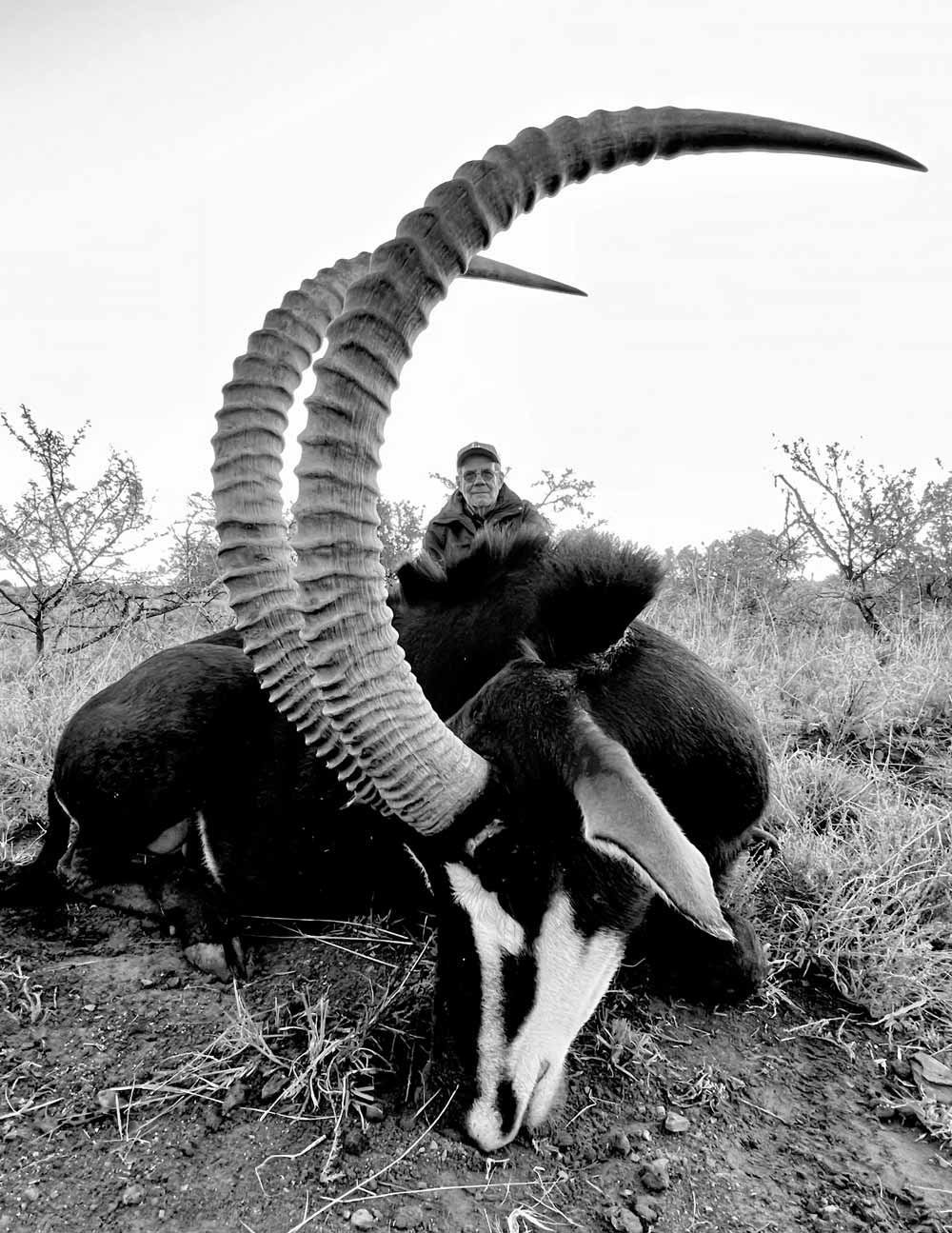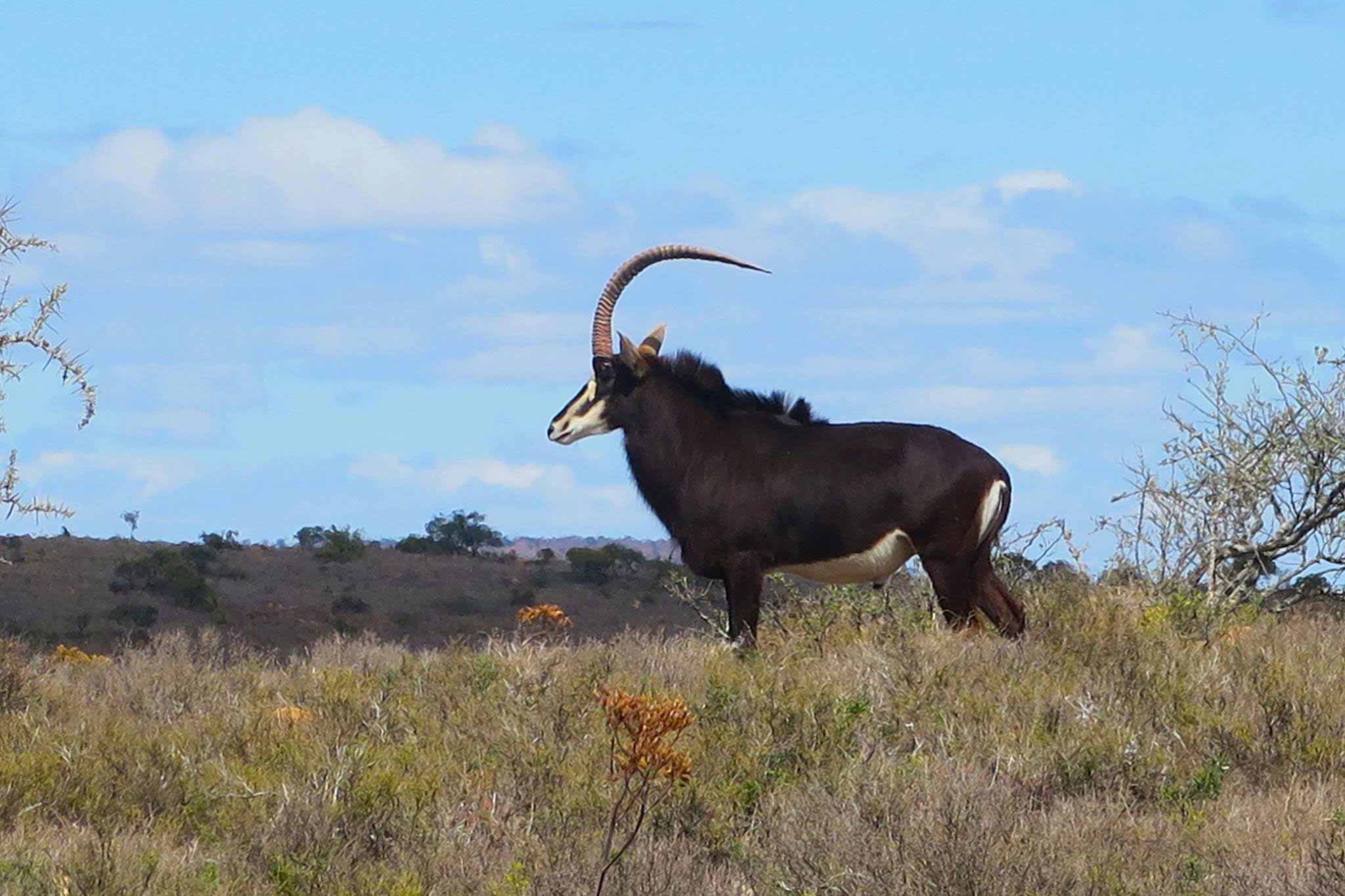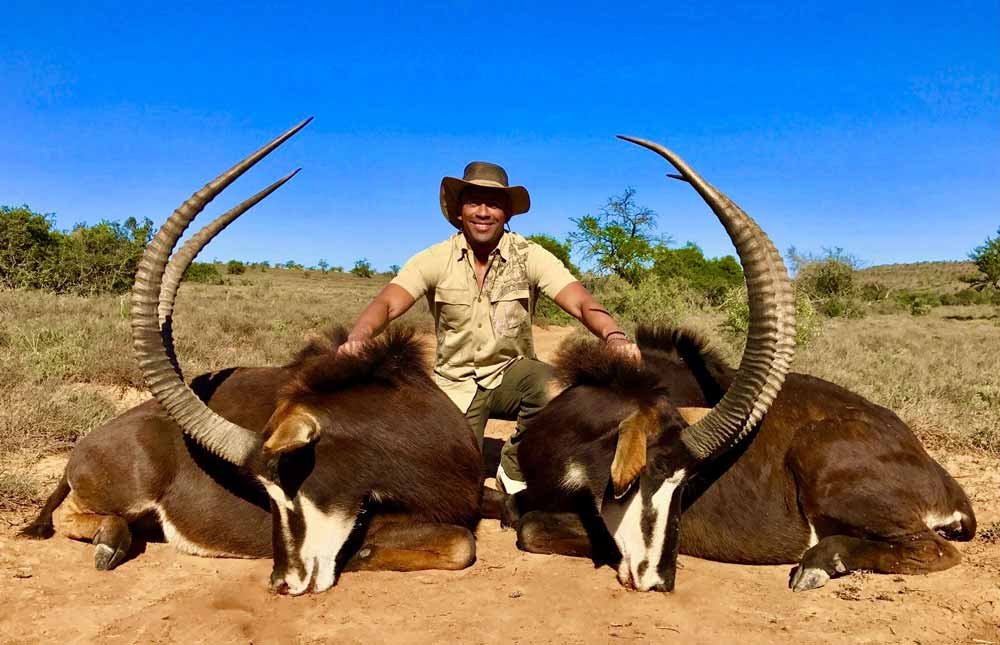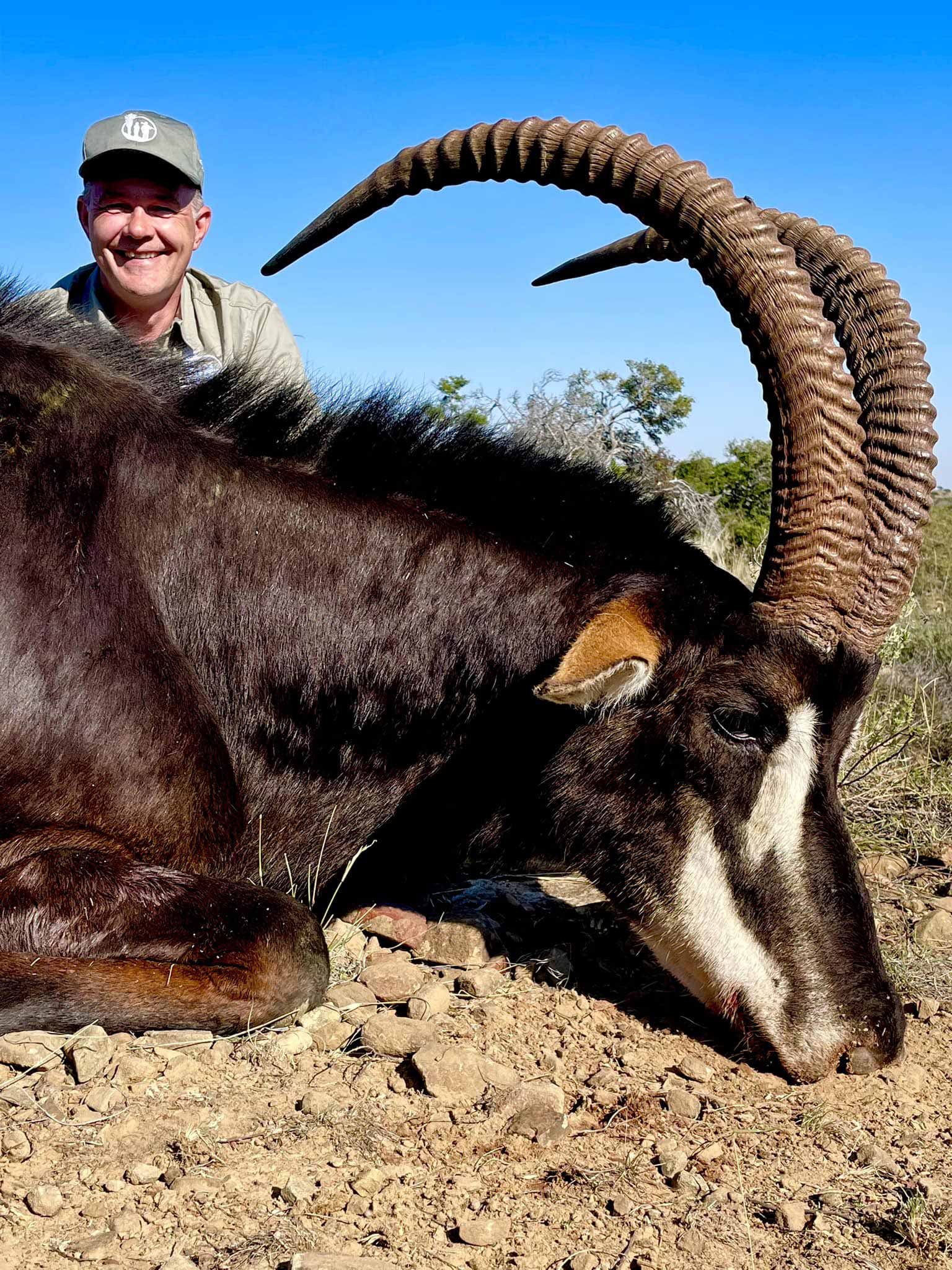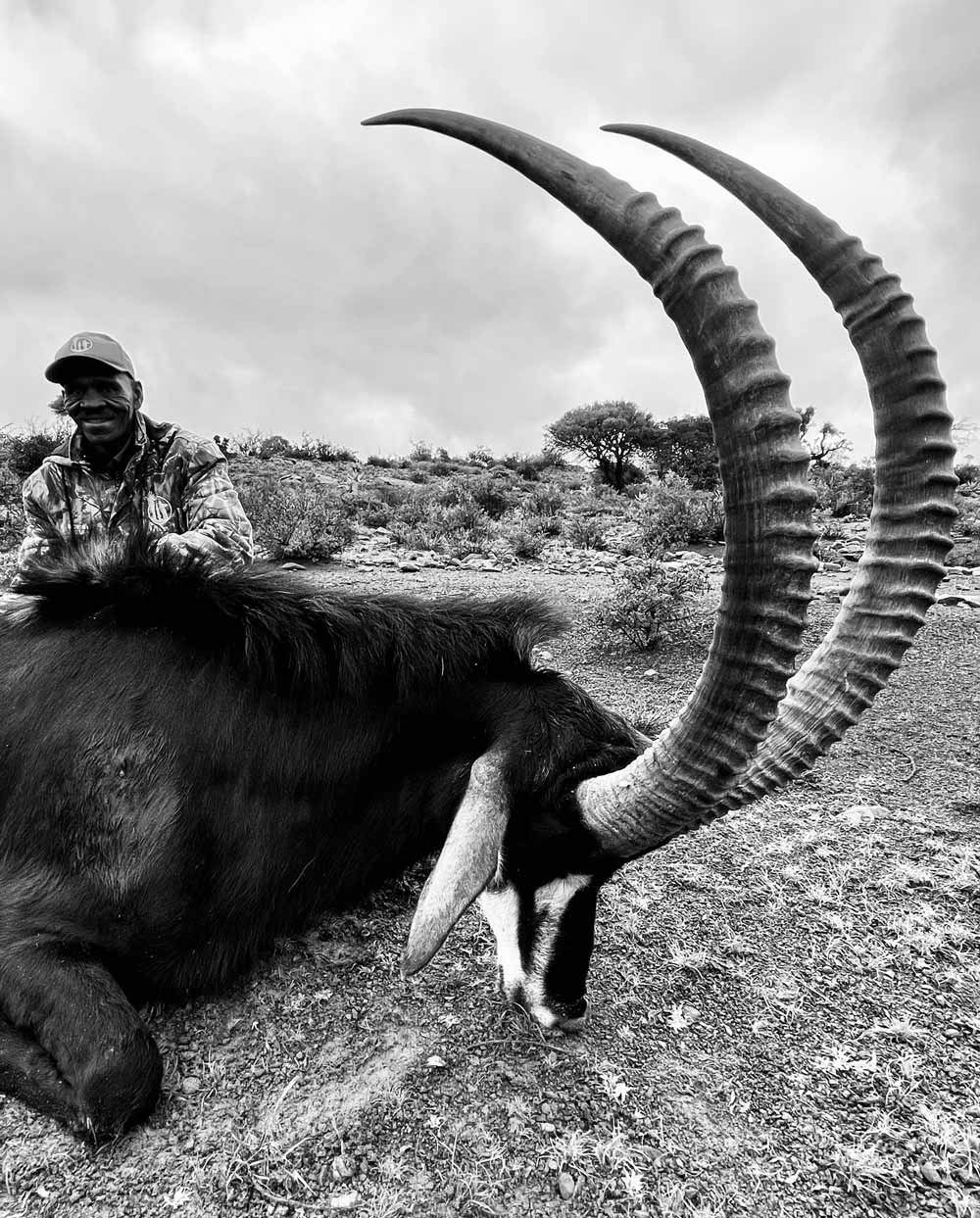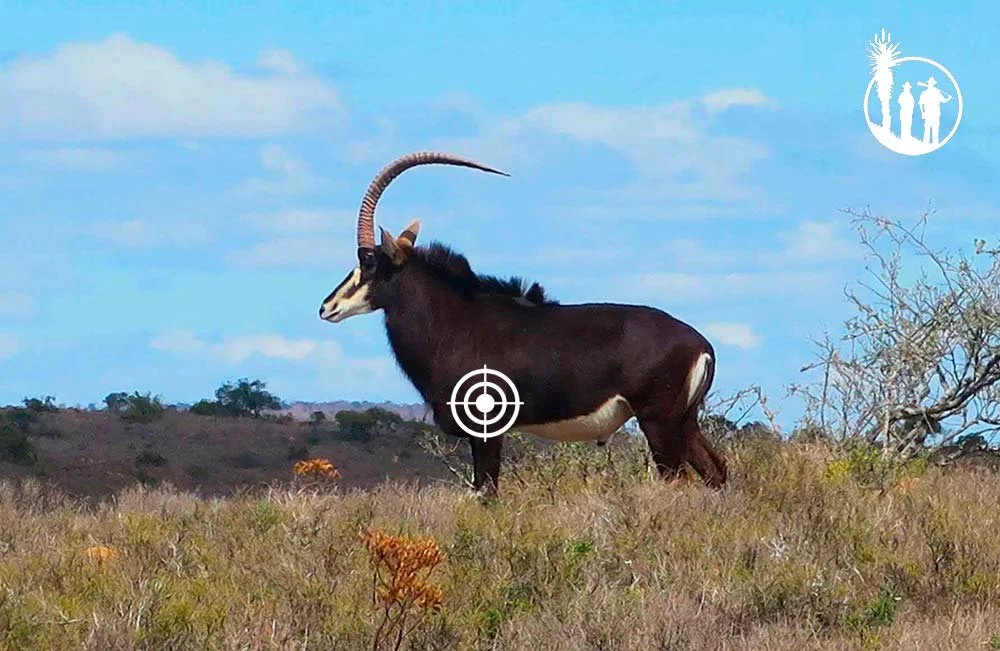
Sable Antelope
Sable Antelope Hunting – African nobility at its finest
The sable antelope is one of Africa’s most breathtaking big game species – a true icon of southern Africa. With its deep black coat, arched horns, and noble posture, the sable is not only visually stunning but also a symbol of prestige in any trophy room. At Side by Side Safaris, we offer exclusive access to high-quality sable hunting areas with mature bulls and excellent genetics.
A walking trophy
The sable is part of the horse antelope family and is known for its muscular frame, bold colors, and spectacular horns – often exceeding 40 inches in mature bulls. Its black-to-dark chocolate coloring, contrasted by a white facial mask, makes it an unforgettable sight. But it’s more than looks: the way it moves – confident, tall, and composed – gives it a presence unlike any other.
The hunt – patience and precision
Sable hunting is a methodical pursuit. These animals tend to stay in small groups and move through woodland edges and open bushveld where they blend beautifully with the terrain. We hunt sable on foot using traditional walk-and-stalk tactics, combined with glassing and tracking near water sources or game trails.
Spotting a mature bull in the wild is a breathtaking moment – and the reason sable are often called “The Black Ghost.”
Recommended calibers – accuracy with authority
Though not classified as dangerous game, sable are tough animals. Calibers such as .30-06 Springfield, .308 Win, 7mm Rem Mag, and .300 Win Mag are ideal. Choose high-quality expanding bullets (bonded soft points or monolithic designs) that deliver both precision and reliable penetration.
A well-placed shot is essential – sable are known to absorb marginal hits and disappear into thick bush quickly if wounded.
Shot placement – clean and effective
The best target is the broadside heart-lung zone, placed just behind the front shoulder and about one-third up the body. For quartering shots, aim through the chest toward the opposite leg to maximize organ damage and recovery chances.
Your PH will guide the setup, but consistent shooting practice under realistic conditions will give you the confidence to make the shot count when it matters.
A trophy to remember
A mature sable bull is not just a prize – it’s a statement. With horns often curving gracefully beyond 40 inches, and a striking appearance, the sable antelope is a centerpiece in any collection. Whether shoulder-mounted or full body, it commands attention and respect.
For many seasoned hunters, the sable is the final piece of their African puzzle – the one that completes the story.
Ready to pursue Africa’s most regal antelope?
Sable hunting is more than a hunt – it’s an experience of elegance, tradition, and raw wilderness. Reach out now, and let us tailor your next safari to match the quality of this majestic species.
📩 Get in touch today to learn more about hunting areas, pricing, and availability.
Facts - Sable Antelope
NAME: SABLE
SCIENTIFIC NAME: HIPPOTRAGUS NIGER
WEIGHT MALE: 235 KG
WEIGHT FEMALE: 210 KG
SHOULDER HEIGHT MALE: 1.35 M
SHOULDER HEIGHT FEMALE: 1.25 M
MATING SEASON: THROUGHOUT THE YEAR
FAQ: Sable Antelope Hunting in South Africa
-
The sable antelope is a large African antelope known for its curved horns and jet-black coat in mature males. It is one of the continent’s most iconic and prized trophies.
-
Sable are commonly found in Limpopo and parts of Eastern Cape on well-managed private game farms.
-
April through September is ideal, as the dry season improves visibility and stalking conditions.
-
Recommended calibers include .300 Win Mag, .338, or .375 H&H for effective penetration and ethical kills.
-
Most hunts are conducted spot-and-stalk style, in varied terrain ranging from thick bush to open grasslands.
-
Its long, backward-curving horns and striking dark hide make it a standout full mount or shoulder mount trophy.
-
Yes, when managed under ethical quotas, sable hunting supports wildlife conservation and helps fund habitat management.
